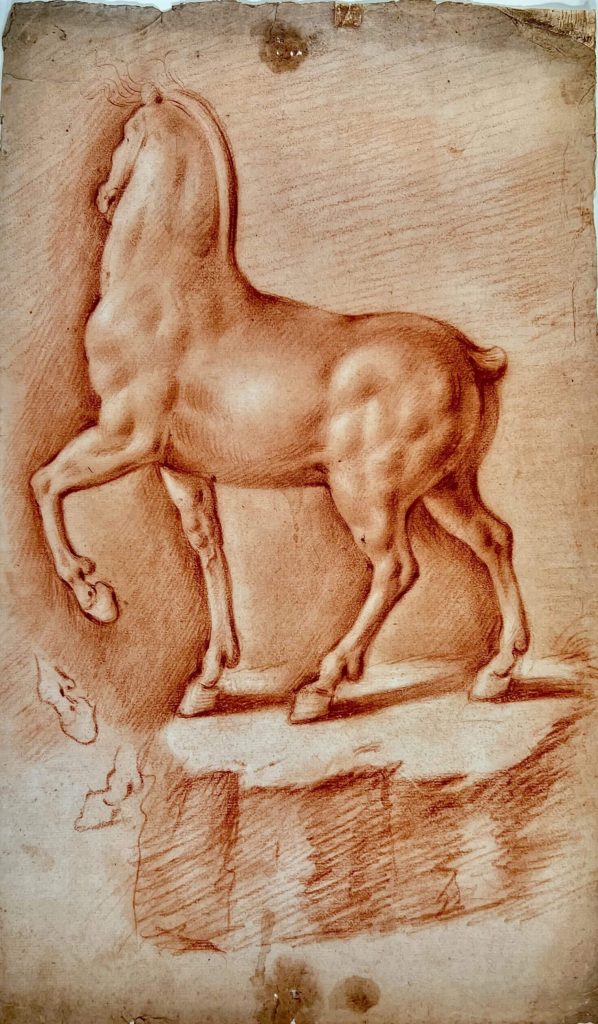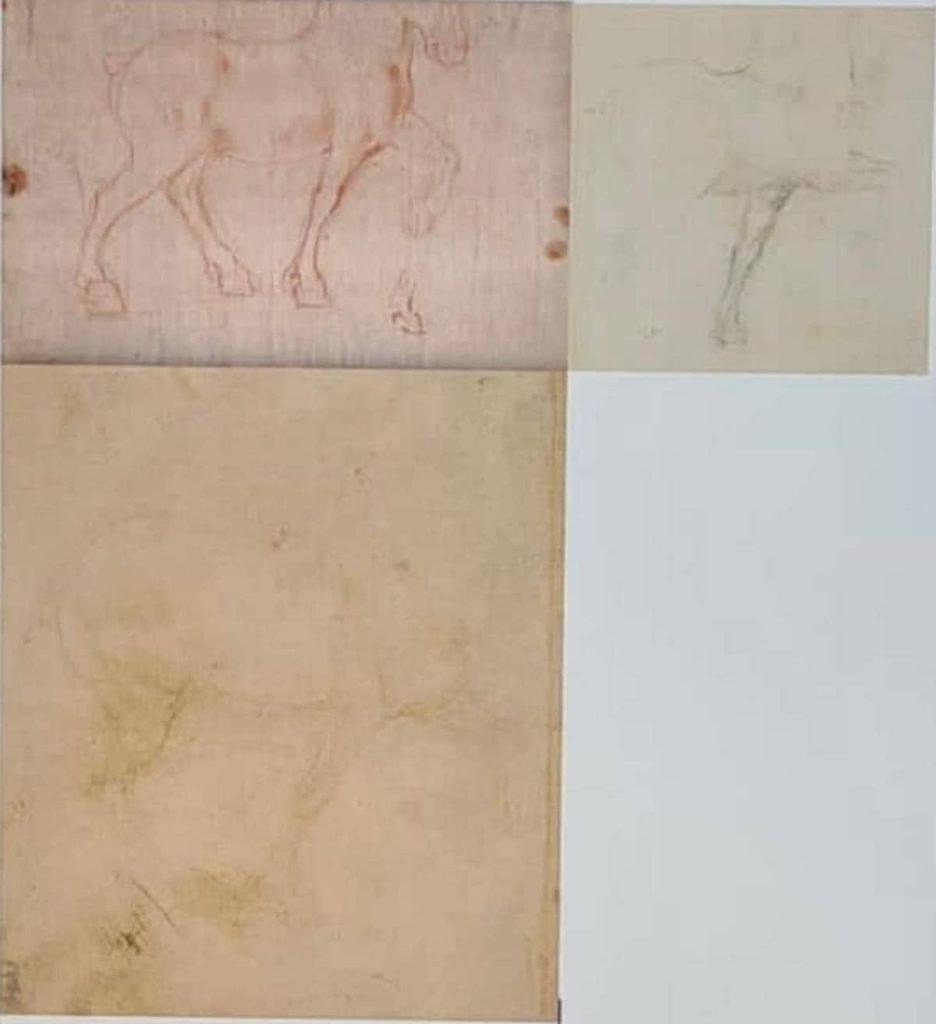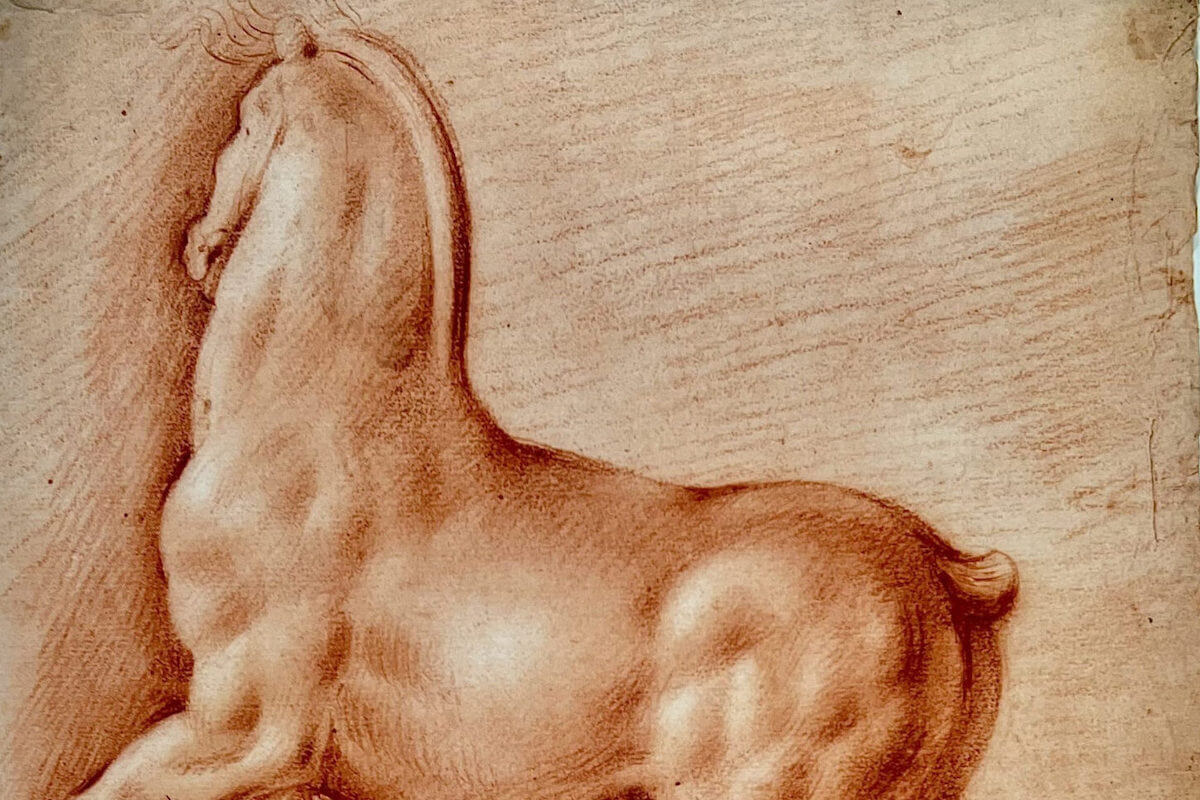Last 9 June, during the conference "Leonardo da Vinci's ideal horse”, Held in the Roman headquarters of European Parliament, was presented a drawing of a horse attributed to the genius of Leonardo da Vinci. The work belongs to a French private collection and would be dated between the end of the XNUMXth and the beginning of the XNUMXth century, thanks to the study at carbon 14 and to the expert in ancient paper, Stephen Fortunati, who found an identical sheet in theGinori archive of Florence. The drawing on double-sided card (format 45,3 × 27,5 cm) was made in blood, whose composition is compatible with the minerals present in Lombardia.

This is the horse from perfect proportions. This was later to be used as a model for the equestrian monument in memory of Francesco Sforza (whose purpose is unknown, despite some attempts at reconstruction). In addition to its indisputable beauty, this work amazes for its mathematical perfection with which it was made. On the back of the drawing there is instead a study of a horse, with real proportions, very similar to those of the Windsor collection.

Leonardo da Vinci's ideal horse: technical analysis
Leonardo da Vinci's The Ideal Horse is a work made with impressive geometric precision. Each part of the drawing is in fact inserted inside golden rectangles. As explained by the scholar Annalisa DiMaria, member of the Board of Directors of the UNESCO Center di Florence and among the leading experts of Leonardo da Vinci: "With professor Jean-Charles Pomerol, former President ofPierre et Marie Curie University of the CNRS di Paris and one of the greatest emeritus mathematicians, we have thoroughly analyzed Leonardo's drawing. Thanks to a deep scientific study carried out on the work, the researches revealed that the entire design was drawn on the basis of the golden ratio and this with great complexity. Leonardo was fond of geometry and one of the most illustrious representatives of Neoplatonism, in search of divine perfection. Mathematics was one of his main tools. This stupendous horse highlights all his genius ».

The golden ratio: Leonardo's hallmark
The inscription of the design inside the golden rectangles, just like theVitruvian Man, in fact, gives the subject asublime harmony. The hand of the master it is noticeable not only in the geometric perfection of the drawing, but also in his unmistakable style. The precise hand, the practically divine technique, the play of light and shadow and the hatching it gives sense of movement and expressiveness to the subject, are all characteristics already present in other drawings by the Florentine master, especially in those relating to the study of the human body. the same stylistic technique is in fact found in works such as lo study of a dog e of the naked man (early XNUMXth century), of the Windsor collection and in horse studies, preserved of the Royal Library of Turin.

Leonardo was fascinated by horses and he regarded them as men did. For this reason the ideal horse of Leonardo da Vinci is inspired by human proportions. Over the years the master has carried out several studies of horses, filling various notebooks with his drawings. Giorgio Vasari ( "The lives") And John Paul Lomazzo ( "Treatise on the art of painting") Have in fact referred to Leonardo's studies on horses. To date, unfortunately, many have been lost. Over the course of his life Leonardo managed several times "to give shape to perfection". With this drawing the master once again gave proof of his artistic technique, so sublime as to touch the divine. One last very important trace of the hand of the immortal genius, which more than 500 years after his death continues to amaze the world with its masterpieces.
Featured photo: © International committee.





